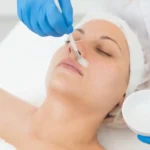THE WHAT? LG Household & Health Care has seen net profit rise 3.4 percent in Q3 to 240 billion won ($205.8 million), while sales fell 2.9 percent in the same period to 2.01 trillion won.
THE DETAILS LG’s beauty division reported a year-on-year decline of 10.2 percent, with operating profit increasing 9 percent to 215.4 billion won.
The home care and beauty division saw YOY sales jump of 6.1 percent, with operating profit down 4.7 percent to 63.6 billion won. This was attributed to the rapid rise in demand for hygiene products last year.
As a result of the fall, company shares were 7 percent off at a near 52-week low of 1,235,000 won ($1,068.43), following the end of its hot earnings streak, according to Pulse News.
THE WHY? According to a company statement, “The deterioration of the business environment triggered by various adverse factors such as the spread of the Delta variant of Covid-19, global supply chain shocks, and price hikes of major raw materials made the third quarter very difficult.
“Sales decreased slightly due to loss of sales opportunities from the intensified logistics crisis ahead of major events such as Double Eleven in China and Black Friday in the U.S. in the fourth quarter, but profitability improved as a result of mix improvement from luxury cosmetics and premium products.”
Aesthetic medicine products are developed and regulated to meet stringent safety and efficacy standards. They are typically administered by trained healthcare professionals such as dermatologists, plastic surgeons, and specialized nurses in clinical settings. These products aim to provide effective solutions for cosmetic enhancement, skin rejuvenation, and overall aesthetic improvement, contributing to both physical appearance and self-confidence.
Key categories of aesthetic medicine products include:
-
Injectables: This category includes products such as dermal fillers, botulinum toxins (e.g., Botox), and collagen stimulators. These injectables are used to smooth wrinkles, add volume, and improve facial contours.
-
Skin Rejuvenation Treatments: Products like chemical peels, microdermabrasion systems, and laser devices are used to improve skin texture, reduce pigmentation irregularities, and enhance overall skin tone.
-
Skincare Products: These include medical-grade cleansers, moisturizers, serums, and topical treatments containing active ingredients like retinoids, antioxidants, and growth factors. They are formulated to address specific skin concerns such as acne, aging, and hyperpigmentation.
-
Hair Restoration Products: Medical treatments and products designed to promote hair growth and treat conditions such as male and female pattern baldness.
-
Body Contouring and Fat Reduction: Devices and products used for non-surgical body sculpting, such as cryolipolysis (cool sculpting) devices and injectable lipolytics.
-
Cosmeceuticals: High-performance skincare products that bridge the gap between cosmetics and pharmaceuticals, often containing potent ingredients with proven clinical benefits.
-
Wound Care and Scar Management: Products like silicone sheets, gels, and advanced wound dressings used to improve healing and reduce the appearance of scars.



